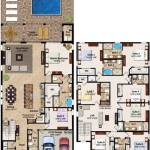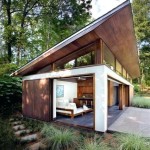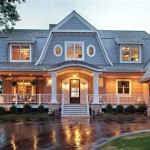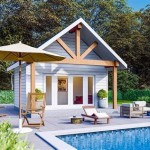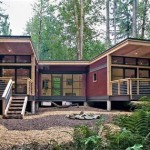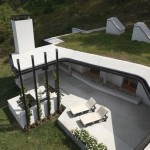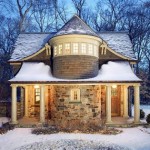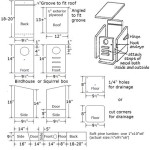Bird house plans provide detailed instructions and specifications for constructing shelters for wild birds. These plans offer a structured blueprint that guides the construction process and ensures proper design and functionality for bird habitation. For instance, bird house plans often include specifications for the appropriate house size, shape, ventilation, and entry hole size to accommodate different bird species.
Whether you’re an experienced bird enthusiast or a novice looking to attract feathered friends to your backyard, bird house plans serve as an invaluable resource. They help you avoid common mistakes and ensure that your birdhouse provides a safe and suitable shelter for its avian occupants.
In this comprehensive guide, we will delve into the world of bird house plans. We’ll explore various plan designs, discuss important considerations for successful birdhouse construction, and provide tips for maximizing the effectiveness and longevity of your birdhouses.
When selecting or creating bird house plans, consider these nine important points:
- Size matters: Choose the right size for your target bird species.
- Shape it right: Select a house shape that mimics natural cavities.
- Ventilation is key: Ensure proper ventilation to prevent overheating and moisture.
- Entrance matters: Design the entry hole to accommodate the target bird species.
- Predator protection: Incorporate features to deter predators and keep nestlings safe.
- Drainage is essential: Provide drainage holes to prevent water accumulation.
- Material matters: Choose durable, weather-resistant materials for longevity.
- Hardware choice: Use appropriate hardware, such as screws or nails, to secure the house.
- Location, location: Place the birdhouse in a suitable location with protection from the elements.
By considering these factors, you can create or select bird house plans that provide a safe and welcoming home for your feathered friends.
Size matters: Choose the right size for your target bird species.
The size of your birdhouse should be appropriate for the target bird species you wish to attract. Birds have specific nesting requirements based on their size and behavior, so choosing the right size house is crucial for their comfort and safety.
- Small birds: Small birds, such as wrens, chickadees, and titmice, prefer small houses with dimensions ranging from 4x4x6 inches to 6x6x8 inches.
- Medium-sized birds: Birds like bluebirds, swallows, and nuthatches require slightly larger houses, typically measuring around 6x6x8 inches to 8x8x10 inches.
- Large birds: Larger bird species, including woodpeckers, flickers, and owls, need spacious houses with dimensions ranging from 8x8x10 inches to 12x12x15 inches or more.
- House shape: In addition to size, consider the shape of the birdhouse. Some birds, like bluebirds, prefer houses with a more open design, while others, like chickadees, may prefer enclosed houses with smaller entry holes.
Choosing the right size and shape birdhouse increases the likelihood of attracting your desired bird species and provides them with a suitable nesting environment.
Shape it right: Select a house shape that mimics natural cavities.
The shape of your birdhouse plays a significant role in attracting and providing a suitable nesting environment for birds. By mimicking natural cavities where birds would typically nest, you increase the appeal and functionality of your birdhouse.
Natural cavity types: Birds utilize various natural cavities for nesting, including tree hollows, rock crevices, and abandoned burrows. These cavities offer protection from predators, shelter from the elements, and a sense of security for nesting birds.
Mimicking natural cavities: Birdhouse designs should strive to replicate these natural cavities as closely as possible. Choose a house shape that provides a sheltered, enclosed space with a single entry point. Avoid houses with elaborate designs or multiple compartments, as these may not be as attractive to birds.
Species-specific preferences: Different bird species may have specific preferences for house shape. For instance, bluebirds prefer houses with a more open design, resembling natural tree cavities. Chickadees, on the other hand, may prefer enclosed houses with smaller entry holes, similar to natural cavities found in tree trunks.
By selecting a house shape that mimics natural cavities, you create a more inviting and suitable nesting environment for your target bird species, increasing the likelihood of successful nesting and occupancy.
Ventilation is key: Ensure proper ventilation to prevent overheating and moisture.
Adequate ventilation is crucial in birdhouse design to prevent overheating and moisture accumulation, which can create an unhealthy and uncomfortable environment for nesting birds. Proper ventilation allows for air circulation, regulating temperature and humidity levels within the birdhouse.
Overheating: On hot days, temperatures inside a birdhouse can rise significantly, posing a danger to nestlings and eggs. Ventilation helps dissipate heat and maintain a comfortable temperature range for the birds.
Moisture accumulation: Without proper ventilation, moisture can accumulate inside the birdhouse due to condensation, bird droppings, or rain seepage. This moisture can lead to mold growth and a damp environment, which can cause respiratory problems and other health issues for the birds.
To ensure proper ventilation, incorporate the following design features into your birdhouse plans:
- Ventilation holes: Install small ventilation holes near the top of the birdhouse, opposite the entry hole. These holes allow for air circulation and prevent moisture buildup.
- Drainage holes: Provide small drainage holes in the floor of the birdhouse to allow water to drain out in case of rain or condensation.
- Avoid overcrowding: Ensure that the birdhouse is not overcrowded with nesting material. Excessive nesting material can block ventilation holes and trap moisture.
By incorporating proper ventilation into your birdhouse plans, you create a healthier and more comfortable environment for nesting birds, increasing their chances of successful breeding and raising their young.
Entrance matters: Design the entry hole to accommodate the target bird species.
The design of the entry hole plays a crucial role in the usability and attractiveness of your birdhouse to specific bird species. Different bird species have varying body sizes and nesting preferences, so tailoring the entry hole size and shape to their needs is essential for successful nesting.
Size matters: The diameter of the entry hole should be large enough to allow the target bird species to enter and exit comfortably, but not so large that it compromises the safety of the nest. A good rule of thumb is to make the entry hole about 1/3 the diameter of the bird’s body.
Shape matters: The shape of the entry hole can also influence which birds use the house. For example, round holes are preferred by chickadees and wrens, while elongated, rectangular holes are more attractive to bluebirds and swallows.
Placement matters: The placement of the entry hole is also important. It should be high enough to deter predators, but not so high that it makes it difficult for the birds to enter and exit. Additionally, the entry hole should face away from prevailing winds and direct sunlight to ensure a comfortable nesting environment.
By carefully considering the size, shape, and placement of the entry hole, you can design a birdhouse that is specifically tailored to the needs of your target bird species, increasing the likelihood of successful nesting and occupancy.
Predator protection: Incorporate features to deter predators and keep nestlings safe.
Protecting your birdhouse from predators is essential to ensure the safety and success of nesting birds. Incorporating predator-deterring features into your birdhouse plans can significantly reduce the risk of predation and increase the chances of successful nesting.
Choose the right location: The placement of your birdhouse plays a crucial role in predator protection. Avoid placing birdhouses near dense vegetation or under low-hanging branches, as these provide easy access for climbing predators like raccoons and squirrels. Instead, mount the birdhouse on a pole or tree trunk at least 5 feet above the ground and away from potential climbing structures.
Install a predator guard: A predator guard is a metal or plastic barrier that fits around the base of the birdhouse pole. It creates a physical obstacle that prevents predators from climbing up the pole and reaching the birdhouse. Predator guards are particularly effective against squirrels and raccoons.
Use a baffle: A baffle is a flat, circular disk that is mounted below the birdhouse entrance hole. It acts as a physical barrier, preventing predators from reaching inside the birdhouse and grabbing nestlings or eggs. Baffles are especially effective against snakes and birds of prey.
Drainage is essential: Provide drainage holes to prevent water accumulation.
Ensuring proper drainage is vital in birdhouse design to prevent water accumulation and maintain a healthy nesting environment for birds. Water accumulation can lead to mold growth, rot, and other problems that can compromise the health and safety of nesting birds.
- Water damage: Excess water inside the birdhouse can cause the nesting material to become damp and moldy, creating an unhealthy environment for the birds. Mold spores can irritate the birds’ respiratory systems and cause health problems.
- Rot and decay: Water accumulation can also lead to rot and decay of the birdhouse structure. This can weaken the house and make it more susceptible to damage from predators or the elements.
- Egg spoilage: If water accumulates in the birdhouse during nesting, it can damage or spoil the eggs, reducing the chances of successful hatching.
- Chick survival: Nestlings are particularly vulnerable to cold and damp conditions. Water accumulation can chill the chicks and increase their risk of hypothermia or death.
To prevent these problems, ensure that your birdhouse plans include drainage holes. These holes should be small enough to prevent nestlings from falling out, but large enough to allow water to drain freely. Place the drainage holes in the floor of the birdhouse, near the corners.
By incorporating proper drainage into your birdhouse design, you can help ensure a healthy and safe nesting environment for your feathered friends.
Material matters: Choose durable, weather-resistant materials for longevity.
The materials you choose for your birdhouse will significantly impact its durability and ability to withstand the elements. Opting for high-quality, weather-resistant materials will ensure that your birdhouse provides a safe and comfortable haven for its avian occupants for many years to come.
- Cedar: Cedar is a naturally rot-resistant and weather-resistant wood that is commonly used in birdhouse construction. It is known for its durability and ability to withstand harsh weather conditions, making it an excellent choice for long-lasting birdhouses.
- Redwood: Redwood is another durable and weather-resistant wood suitable for birdhouse construction. It is naturally resistant to decay, insects, and moisture, making it an ideal choice for birdhouses exposed to extreme weather conditions.
- Cypress: Cypress is a rot-resistant and water-resistant wood that is also resistant to warping and shrinking. It is a good choice for birdhouses that will be exposed to moisture or humidity.
- Plastic: Durable plastic materials, such as recycled plastic lumber or PVC, are excellent options for birdhouses as they are weather-resistant, waterproof, and easy to clean. Plastic birdhouses are also lightweight and easy to install.
When choosing materials for your birdhouse, consider the climate and weather conditions in your area. Select materials that are appropriate for your local climate to ensure the longevity and effectiveness of your birdhouse.
Hardware choice: Use appropriate hardware, such as screws or nails, to secure the house.
The choice of hardware used to secure your birdhouse is crucial for ensuring its stability and longevity. Opting for the right hardware will prevent the birdhouse from falling apart or becoming damaged due to strong winds or other external forces.
- Screws: Screws are a reliable and sturdy option for securing birdhouse components. They provide a strong hold and are less likely to loosen over time compared to nails. Choose screws that are long enough to penetrate both pieces of wood being joined and have a head that is large enough to prevent it from pulling through the wood.
- Nails: Nails are another common choice for securing birdhouse components. They are easy to use and readily available. However, nails are more susceptible to bending or pulling out compared to screws. When using nails, opt for galvanized or stainless steel nails to prevent rust and ensure durability.
- Rust-resistant hardware: It is essential to use rust-resistant hardware, such as galvanized or stainless steel screws or nails, to prevent rust from compromising the integrity of the birdhouse. Rust can weaken the hardware, causing it to fail and potentially leading to the collapse of the birdhouse.
- Avoid over-tightening: While it is important to ensure that the hardware is securely tightened, avoid over-tightening as this can damage the wood or strip the threads of the screws.
By selecting appropriate hardware and using it correctly, you can ensure that your birdhouse remains sturdy and provides a safe and stable nesting environment for its avian inhabitants.
Location, location: Place the birdhouse in a suitable location with protection from the elements.
The placement of your birdhouse is crucial for its success and the well-being of its avian occupants. Selecting a suitable location with adequate protection from the elements is essential to ensure that the birds have a safe and comfortable nesting environment.
Protection from predators: Choose a location that provides protection from potential predators, such as cats, raccoons, and squirrels. Avoid placing the birdhouse near dense vegetation or under low-hanging branches, as these can provide easy access for climbing predators. Instead, mount the birdhouse on a pole or tree trunk at least 5 feet above the ground and away from any potential climbing structures.
Shelter from the elements: The birdhouse should be placed in a location that offers shelter from the elements, such as rain, wind, and direct sunlight. Choose a spot that is partially shaded during the day to prevent overheating inside the birdhouse. Avoid placing the birdhouse in areas that are exposed to strong winds or heavy rain, as these can damage the structure and make it uncomfortable for the birds.
Accessibility for birds: Ensure that the birdhouse is placed in a location that is easily accessible for the target bird species. Consider the flight patterns and habits of the birds you wish to attract and place the birdhouse in a spot that is within their preferred nesting height range. Avoid placing the birdhouse too high or in a location that is difficult for the birds to reach.
By carefully considering the location of your birdhouse and providing adequate protection from the elements, you can create a welcoming and safe haven for nesting birds, increasing the chances of successful nesting and raising their young.










Related Posts

